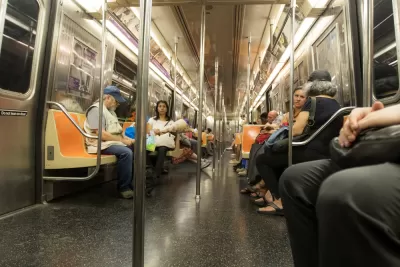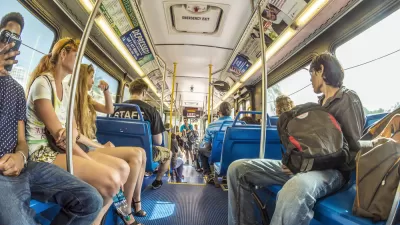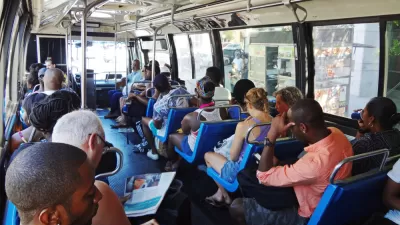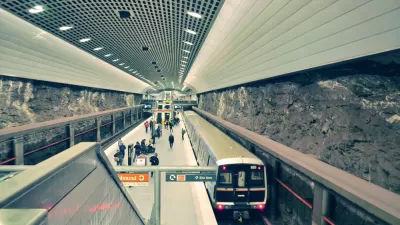A survey of public transit users indicates riders want to see more tech features that improve their experience, such as trip planning and improved payment platforms.

According to an article by Skip Descant, "[p]ublic transit riders in post-lockdown America want their buses and trains to arrive on time, with shorter wait times, and they want to be kept up to speed on crowding and cleanliness." While these might seem like basic expectations, the pandemic highlighted the gaps in transit service and, at the same time, accelerated the implementation of certain service improvements that riders will expect to continue in the post-COVID era.
A recent survey of 1,200 transit riders showed that most people "want apps or tech features to improve the transit experience. These can come in the form of real-time vehicle-crowding data, or technology that integrates trip planning across multiple modes and payment." The survey also showed that 40 percent of transit riders use two forms of transportation during their commute, while 20 percent use three forms of mobility, "making the case for better multimodal integration across transportation systems." Respondents also indicated a desire to see continued protocols to limit crowding.
"COVID-19 has shown itself to be a time of innovation across government sectors — some of it forced, while in other cases hastening trends already in place — and presents opportunities for better systems than before the pandemic, say observers." To help transit recover, transit agencies can use rider feedback on pandemic measures to inform their decisions about how to improve future service and provide "compelling options" that make it easier for commuters to ditch their cars.
FULL STORY: Transit Riders Expect Tech Improvements Post-COVID

Maui's Vacation Rental Debate Turns Ugly
Verbal attacks, misinformation campaigns and fistfights plague a high-stakes debate to convert thousands of vacation rentals into long-term housing.

Planetizen Federal Action Tracker
A weekly monitor of how Trump’s orders and actions are impacting planners and planning in America.

Chicago’s Ghost Rails
Just beneath the surface of the modern city lie the remnants of its expansive early 20th-century streetcar system.

Bend, Oregon Zoning Reforms Prioritize Small-Scale Housing
The city altered its zoning code to allow multi-family housing and eliminated parking mandates citywide.

Amtrak Cutting Jobs, Funding to High-Speed Rail
The agency plans to cut 10 percent of its workforce and has confirmed it will not fund new high-speed rail projects.

LA Denies Basic Services to Unhoused Residents
The city has repeatedly failed to respond to requests for trash pickup at encampment sites, and eliminated a program that provided mobile showers and toilets.
Urban Design for Planners 1: Software Tools
This six-course series explores essential urban design concepts using open source software and equips planners with the tools they need to participate fully in the urban design process.
Planning for Universal Design
Learn the tools for implementing Universal Design in planning regulations.
planning NEXT
Appalachian Highlands Housing Partners
Mpact (founded as Rail~Volution)
City of Camden Redevelopment Agency
City of Astoria
City of Portland
City of Laramie





























